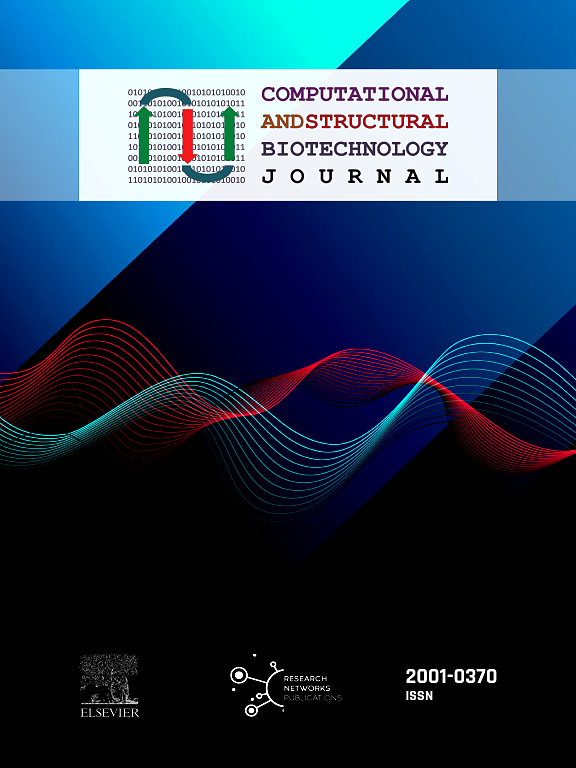Machine learning and artificial intelligence: Enabling the clinical translation of atomic force microscopy-based biomarkers for cancer diagnosis
IF 4.4
2区 生物学
Q2 BIOCHEMISTRY & MOLECULAR BIOLOGY
Computational and structural biotechnology journal
Pub Date : 2024-10-05
DOI:10.1016/j.csbj.2024.10.006
引用次数: 0
Abstract
The influence of biomechanics on cell function has become increasingly defined over recent years. Biomechanical changes are known to affect oncogenesis; however, these effects are not yet fully understood. Atomic force microscopy (AFM) is the gold standard method for measuring tissue mechanics on the micro- or nano-scale. Due to its complexity, however, AFM has yet to become integrated in routine clinical diagnosis. Artificial intelligence (AI) and machine learning (ML) have the potential to make AFM more accessible, principally through automation of analysis. In this review, AFM and its use for the assessment of cell and tissue mechanics in cancer is described. Research relating to the application of artificial intelligence and machine learning in the analysis of AFM topography and force spectroscopy of cancer tissue and cells are reviewed. The application of machine learning and artificial intelligence to AFM has the potential to enable the widespread use of nanoscale morphologic and biomechanical features as diagnostic and prognostic biomarkers in cancer treatment.
机器学习和人工智能:实现基于原子力显微镜的癌症诊断生物标记的临床转化
近年来,生物力学对细胞功能的影响越来越明确。众所周知,生物力学变化会影响肿瘤发生;然而,人们对这些影响尚未完全了解。原子力显微镜(AFM)是在微米或纳米尺度上测量组织力学的黄金标准方法。然而,由于其复杂性,原子力显微镜尚未纳入常规临床诊断。人工智能(AI)和机器学习(ML)有可能使原子力显微镜更易于使用,主要是通过自动化分析。本综述将介绍原子力显微镜及其在癌症细胞和组织力学评估中的应用。本综述回顾了与应用人工智能和机器学习分析癌症组织和细胞的原子力显微镜形貌和力谱有关的研究。将机器学习和人工智能应用于原子力显微镜有可能使纳米级形态学和生物力学特征作为癌症治疗的诊断和预后生物标记得到广泛应用。
本文章由计算机程序翻译,如有差异,请以英文原文为准。
求助全文
约1分钟内获得全文
求助全文
来源期刊

Computational and structural biotechnology journal
Biochemistry, Genetics and Molecular Biology-Biophysics
CiteScore
9.30
自引率
3.30%
发文量
540
审稿时长
6 weeks
期刊介绍:
Computational and Structural Biotechnology Journal (CSBJ) is an online gold open access journal publishing research articles and reviews after full peer review. All articles are published, without barriers to access, immediately upon acceptance. The journal places a strong emphasis on functional and mechanistic understanding of how molecular components in a biological process work together through the application of computational methods. Structural data may provide such insights, but they are not a pre-requisite for publication in the journal. Specific areas of interest include, but are not limited to:
Structure and function of proteins, nucleic acids and other macromolecules
Structure and function of multi-component complexes
Protein folding, processing and degradation
Enzymology
Computational and structural studies of plant systems
Microbial Informatics
Genomics
Proteomics
Metabolomics
Algorithms and Hypothesis in Bioinformatics
Mathematical and Theoretical Biology
Computational Chemistry and Drug Discovery
Microscopy and Molecular Imaging
Nanotechnology
Systems and Synthetic Biology
 求助内容:
求助内容: 应助结果提醒方式:
应助结果提醒方式:


